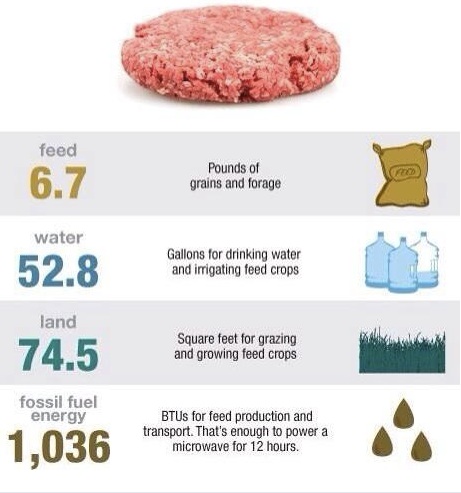Earth Day: Improve Your Wellness, Improve The World

Though there is a lot of disagreement over what is and is not true in terms of anthropogenic contributions to global climate, many people have taken it upon themselves to try and reduce their carbon footprint. This carbon footprint represents each person's or company’s contribution to the global climate issue in terms of carbon emissions.
There are many things that can affect your carbon footprint, the most obvious culprits being car emissions and your energy bill.
Other lifestyle choices, while seemingly harmless and inconsequential, can have just as much of an effect on climate. Many of these lifestyle choices are related to wellness and a healthy lifestyle. There are easy ways to both help out the environment while simultaneously helping out your body.
Here are the top five ways to reduce your carbon footprint, while also benefiting your health.
1. Reduce Your Red Meat Consumption
Research has shown that red meat consumption contributes to carbon emissions on an immense scale. Switching to a diet without red meat, or even a vegetarian or vegan diet, can severely reduce your carbon emissions.
Even better than lowering your carbon footprint with a simple diet change, consuming less red meat is extremely beneficial to your health. Research has demonstrated that red meat consumption has been linked to many chronic diseases, as well as some cancers.
2. Buy Your Produce and Other Grocery Items Locally
The entire process of both transporting food elsewhere and manufacturing processed foods creates a large amount of carbon emissions. “Food miles,” or the lengths to which companies must go to transport foods elsewhere, can add up quickly with flights and trucks. This is only part of the issue, however, as production actually contributes a larger percent to carbon emissions.
In order to combat this, buy your food from local farmers markets whenever possible. Not only does this decrease food miles and production emissions, but produce found at markets are often fresher and therefore more nutritious than the packaged produce found at your local grocery store. Buying directly from farmers also reduces the chances of buying produce that have been doused in pesticides and other chemicals that can be harmful to ingest.
3. Create Your Own Edible Garden

Growing and consuming your own food also has many of the same health benefits as buying food locally, only more extreme. By growing your own food, you control exactly what chemicals you do or do not use, ensuring that the vegetables you eat are actually healthy.
4. Eat In-Season Produce
Eating produce that is in season impacts your food miles drastically, especially when you combine it with eating locally. By buying in-season, local produce, you ensure that your foods haven’t traveled great lengths to get to you, and haven’t been manipulated by production strategies to grow out-of-season.
It is also beneficial to eat in-season for health reasons. When fruits and vegetables are grown in-season, they reach their peak nutritional value, ensuring that you get the most out of what you're eating.
5. Exercise Outdoors
Rather than use a gym to get in your daily run, take a jog around the block. By skipping out on the machine-filled gym, you reduce the energy that gym consumes to function, while also increasing the energy you expend. Let’s face it, the pavement is harder than the treadmill.
Better yet, if possible, get rid of your car or public transportation that you normally use to get around and commute to work or class via a bike or your legs. By removing the carbon emissions from your car, you reduce your carbon footprint substantially, while also committing to daily exercise you might otherwise be too busy to squeeze in.
Reach Staff Writer Ashley Seruya here or follow her on Twitter here.



